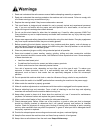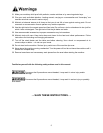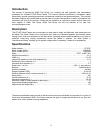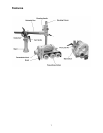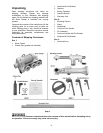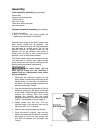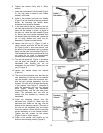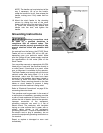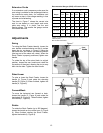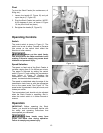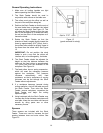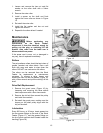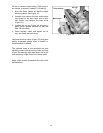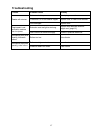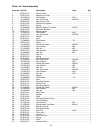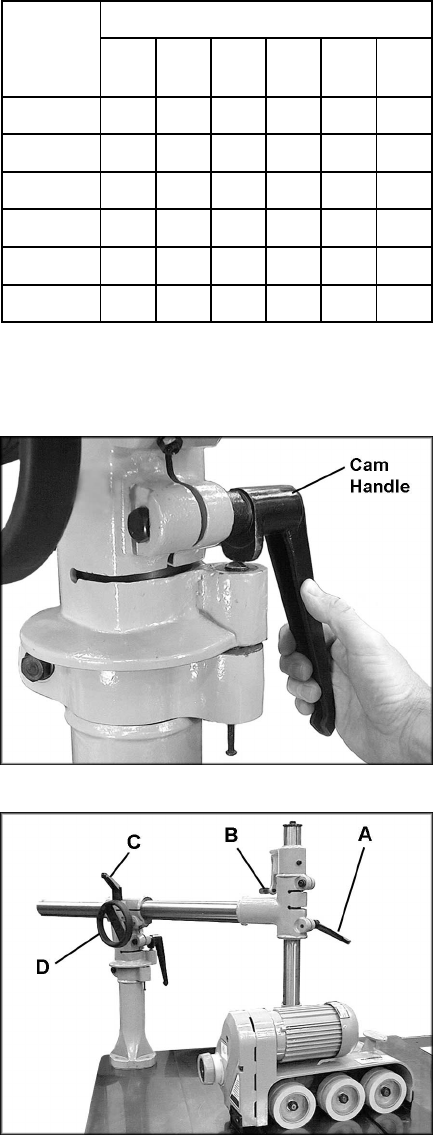
12
Extension Cords
If an extension cord is necessary make sure the
cord rating is suitable for the amperage listed on
the machine's motor plate. An undersize cord
will cause a drop in line voltage resulting in loss
of power and overheating.
The chart in Figure 7 shows the correct size
cord to use based on cord length and motor
plate amp rating. If in doubt, use the next
heavier gauge. The smaller the gauge number
the heavier the cord.
Adjustments
Swing
To swing the Stock Feeder laterally, loosen the
cam handle counterclockwise so that it pushes
down the pin, as shown in Figure 8. Swing the
horizontal arm and feeder into desired position
(the top part of the stand will rotate). When the
Stock Feeder is properly positioned, tighten cam
handle.
To rotate the top of the stand back to original
position, loosen the cam handle and rotate the
top section of the stand, allowing the pin to snap
back into the hole. Tighten the cam handle.
Raise/Lower
To raise or lower the Stock Feeder, loosen the
handle (A, Figure 9) and rotate the elevating
handle (B, Figure 9). When finished, tighten the
handle (A, Figure 9).
Forward/Back
To move the horizontal arm forward or back,
loosen the handle (C, Figure 9) and rotate the
handwheel (D, Figure 9). When finished, tighten
the handle (C, Figure 9).
Rotate
To rotate the Stock Feeder (up to 360 degrees),
loosen the handle on the vertical arm (A, Figure
9). When finished rotating the Stock Feeder,
tighten the handle (A, Figure 9).
Recommended Gauges (AWG) of Extension Cords
Extension Cord Length *
Amps
25
feet
50
feet
75
feet
100
feet
150
feet
200
feet
< 5 16 16 16 14 12 12
5 to 8 16 16 14 12 10 NR
8 to 12 14 14 12 10 NR NR
12 to 15 12 12 10 10 NR NR
15 to 20 10 10 10 NR NR NR
21 to 30 10 NR NR NR NR NR
*based on limiting the line voltage drop to 5V at 150% of the
rated amperes.
NR: Not Recommended.
Figure 7
Figure 8
Figure 9



